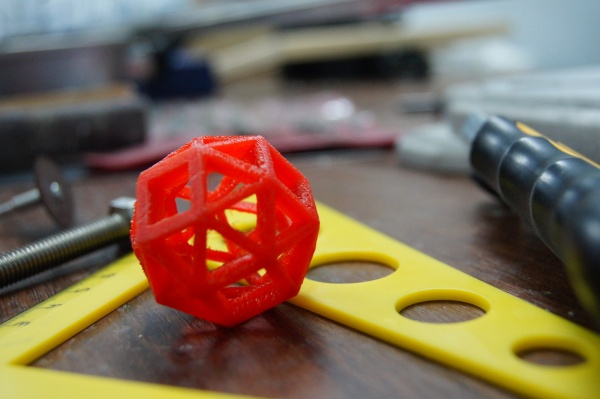|
researchers at the university of southern california’s viterbi school of engineering have completed what they believe to be the first step towards material that is unresponsive to heat by demonstrating a 3-d printed structure that contracted when heated.

usc researchers created a 3-d printed material that contracted when heated. (wikimedia commons)
according to a report on the school’s website, typical materials expand when heated, which is the reason that buildings and bridges have expansion joints. the first step for researchers to eliminate the expansion under higher temperatures was to create a material that did the opposite.
in order to create the new material, a new 3-d printing process was created to combine pegda hard plastic and pegda reinforced with copper particles. a uv light solidifies thin layers of liquid one at a time, allowing users to switch between materials as needed (and use as many materials as needed).
a 3-d lattice structure was designed with beams at angles to take advantage of the materials’ typical expansion. the article continued, “as the two materials expand at different rates, the beams are pulled inward, making the structure as a whole contract.”
the structure’s contraction can be manipulated by altering the amount of copper in the plastic. researchers also believe that zero expansion can be achieved by incorporating a composite between positive expansion material with negative inside of it.
the research was published by the american physical society in october. the abstract read:
“ice floating on water is a great manifestation of negative thermal expansion (nte) in nature. the limited examples of natural materials possessing nte have stimulated research on engineered structures. previous studies on nte structures were mostly focused on theoretical design with limited experimental demonstration in two-dimensional planar geometries.
“in this work, aided with multimaterial projection microstereolithography, we experimentally fabricate lightweight multimaterial lattices that exhibit significant negative thermal expansion in three directions and over a temperature range of 170 degrees. such nte is induced by the structural interaction of material components with distinct thermal expansion coefficients.
“the nte can be tuned over a large range by varying the thermal expansion coefficient difference between constituent beams and geometrical arrangements. our experimental results match qualitatively with a simple scaling law and quantitatively with computational models.”
read the full report at http://journals.aps.org/prl/abstract/10.1103/physrevlett.117.175901.
|